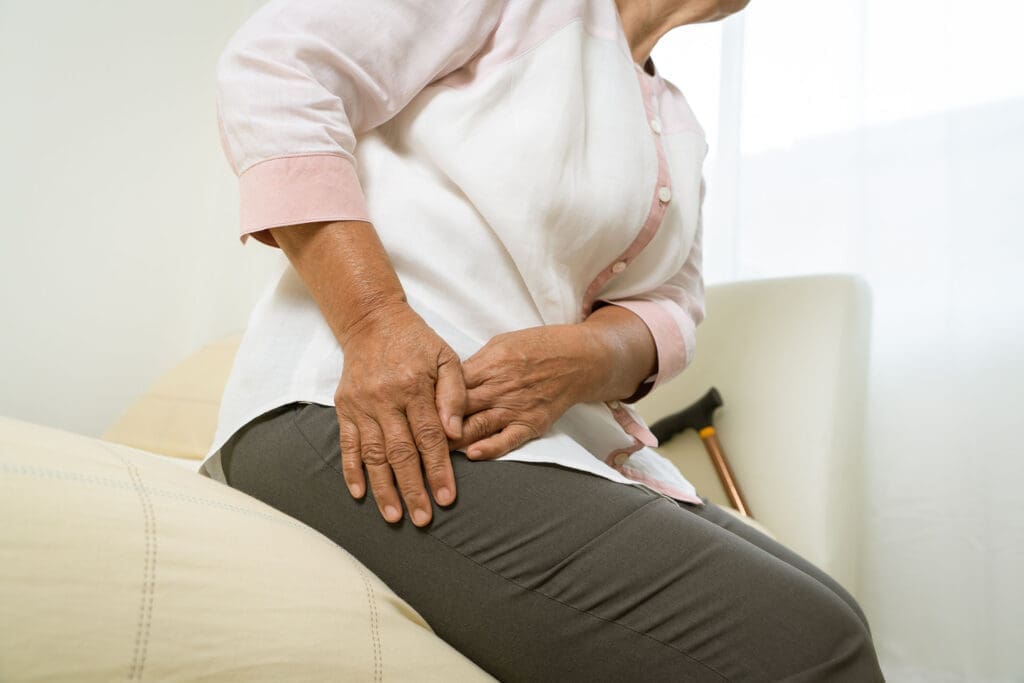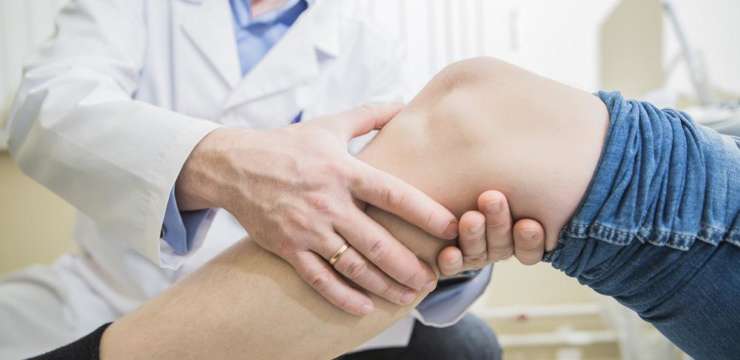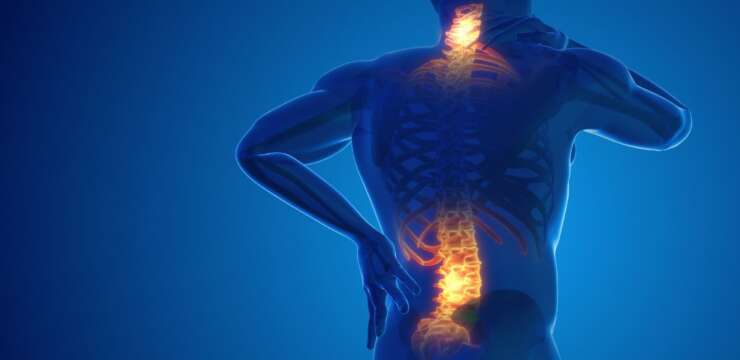
Suffering from sacroiliac joint pain? Learn how chiropractic care can provide effective relief for your discomfort.
Table of Contents
Sacroiliac Joint Pain and Hip Pain: How Chiropractic Care with Dr. Alexander Jimenez in El Paso, TX, Offers Relief
Well, hello there, folks! It’s your ol’ pal Herman Munster, stomping in with my size 26 boots to talk about something that’s been making a lot of you feel like you’re stuck in a haunted house—sacroiliac joint pain and its sneaky sidekick, hip pain. If your lower back’s been acting like it’s auditioning for a horror flick or your hips are creaking louder than my old castle door, don’t worry! In El Paso, Texas, there’s a hero named Dr. Alexander Jimenez, DC, APRN, FNP-BC, who’s got the chiropractic magic to send those aches packing. With his fancy functional medicine tricks and a knack for helping folks after personal injuries, he’s like the Frankenstein of pain relief—minus the bolts! So, grab a comfy chair (if your hips allow it), and let’s dive into this 5,000+ word tale about why your sacroiliac joint and hips are throwing a tantrum, how they’re connected, and how chiropractic care can get you back to dancing like nobody’s watching.
What’s the Sacroiliac Joint, and Why’s It So Grumpy?
Let’s start with the basics, because even a big lug like me needs to know what’s going on. The sacroiliac joint—SI joint for short—is like the hinge that keeps your spine and pelvis from arguing. It’s where the sacrum (that triangle-shaped bone at the bottom of your spine) shakes hands with the ilium (the big, wing-like bones of your pelvis). You’ve got one SI joint on each side of your lower back, and they’re held together by tough ligaments that make sure everything stays steady when you’re walking, sitting, or trying to do the Munster family jig.
Here’s the spooky part: the SI joint only moves a tiny bit, about 2-4 millimeters, which is less wiggle room than Grandpa Munster’s got in his coffin (Grivas et al., 2015). That small movement is super important for soaking up shock and keeping your pelvis and spine in harmony. But when the SI joint gets out of whack—think inflammation, misalignment, or injury—it can turn into a real pain in the posterior, if you catch my drift. And since it’s so close to your hips, trouble in the SI joint can make your hips feel like they’re starring in a monster movie.
Why the SI Joint Gets All Cranky
The SI joint can get as grumpy as me when Lily hides my favorite bat-wing stew. Here are some reasons it might be throwing a fit:
- Injury or Trauma: A slip, fall, or car accident can knock the SI joint out of place, especially in personal injury cases like those Dr. Jimenez handles in El Paso. It’s like tipping over a stack of Eddie’s toy tombstones—chaos!
- Pregnancy: Hormones like relaxin loosen up the ligaments, making the SI joint wobbly and sore. It’s like the joint’s saying, “I’m taking a break, see ya later!”
- Arthritis: Osteoarthritis or ankylosing spondylitis can inflame the SI joint, making it stiff and achy, like rust on my old monster truck (Foley & Bulder, 2019).
- Muscle Imbalances: Weak or tight glutes, hamstrings, or core muscles can tug on the SI joint, like Spot pulling at my pant leg.
- Repetitive Stress: Jobs or sports with lots of twisting or lifting can wear the joint down, like me trying to lift too many pumpkins for Halloween.
When the SI joint’s not happy, it can send pain shooting into your lower back, hips, or even down your legs, pretending to be sciatica. Speaking of hips, let’s see how these two are like me and Grandpa—always together, sometimes causing double trouble.
References
- Grivas, T. B., Burwell, R. G., & Vasiliadis, E. S. (2015). The evolution of the human pelvis: Changing adaptations to bipedalism, obstetrics, and thermoregulation. Philosophical Transactions of the Royal Society B: Biological Sciences, 370(1663), 20140063. pubmed.ncbi.nlm.nih.gov/25602067/
- Foley, B. S., & Bulder, M. M. (2019). Sacroiliac joint dysfunction in patients with low back pain. Federal Practitioner, 36(8), 370–375. pubmed.ncbi.nlm.nih.gov/31456626/
How Hip Pain and the Sacroiliac Joint Are Like Best Pals (or Worst Enemies)
Now, let’s talk hips, because they’re as close to the SI joint as me and Grandpa Munster sharing a coffin. The hip joint (where your thigh bone meets your pelvis) and the SI joint are neighbors, sharing muscles, ligaments, and nerves that can pass pain around like a hot potato at a Munster family picnic. When one’s acting up, the other often joins the party, making you feel like you’re stuck in a haunted maze.
Why Hip Pain and SI Joint Pain Team Up
Hip pain can come from all sorts of places—arthritis, bursitis, tendonitis, or a torn labrum—but when it’s tied to the SI joint, it’s usually because of a biomechanical mix-up. Here’s how they get tangled:
- Shared Muscles and Ligaments: Muscles like the piriformis, glutes, and hamstrings hook up to both the pelvis and the SI joint. If the SI joint’s misaligned, it can pull on these muscles, causing hip pain that feels like a ghoul pinching you (Cohen, 2005).
- Nerve Shenanigans: The nerves around the SI joint and hip, like the sciatic nerve, can get irritated, sending pain to both spots. It’s like getting a prank call from two monsters at once.
- Biomechanical Boo-Boos: If your SI joint’s stuck or moving too much, it can throw your pelvis out of alignment, stressing your hip joints. Picture me trying to balance a tray of goblets with one leg shorter than the other—disaster!
- Referred Pain: SI joint dysfunction can send pain to your hips, groin, or thighs, tricking you into thinking your hip’s the culprit when it’s really the SI joint stirring up trouble (Foley & Bulder, 2019).
For example, sacroiliitis (inflammation of the SI joint) can make your hips, butt, or lower back ache, especially when you’re sitting or climbing stairs. It’s like the SI joint decided to throw a spooky shindig and invited your hips along.
Common Causes of Hip Pain Tied to the SI Joint
Here’s why your hips might be singing the blues because of your SI joint:
- Sacroiliac Joint Dysfunction: When the SI joint doesn’t move right, it can strain hip muscles and ligaments, causing a deep ache or sharp jab (Foley & Bulder, 2019).
- Trauma from Personal Injury: Car accidents or falls, common in El Paso, can jar the SI joint and hips, leading to inflammation or misalignment. Dr. Jimenez sees this all the time (Jimenez, 2017).
- Poor Posture or Gait: Slouching or limping can mess with your pelvis, stressing both the SI joint and hips. It’s like walking with one of my boots untied—everything’s off!
- Pregnancy or Postpartum Issues: The SI joint can get loosey-goosey during pregnancy, causing hip pain that lingers like a stubborn ghost (Vleeming et al., 2008).
- Arthritis or Degeneration: Conditions like osteoarthritis can hit both the SI joint and hips, making them grumble like a cranky old couple (Benzon et al., 2016).
References
- Cohen, S. P. (2005). Sacroiliac joint pain: A comprehensive review of anatomy, diagnosis, and treatment. Anesthesia & Analgesia, 101(5), 1440–1453. pubmed.ncbi.nlm.nih.gov/16244008/
- Foley, B. S., & Bulder, M. M. (2019). Sacroiliac joint dysfunction in patients with low back pain. Federal Practitioner, 36(8), 370–375. pubmed.ncbi.nlm.nih.gov/31456626/
- Jimenez, A. (2017). Sciatica from low back & hip pain. DrAlexJimenez.com. dralexjimenez.com/sciatica-caused-by-low-back-and-hip-pain/
- Vleeming, A., Albert, H. B., Østgaard, H. C., Sturesson, B., & Stuge, B. (2008). European guidelines for the diagnosis and treatment of pelvic girdle pain. European Spine Journal, 17(6), 794–819. pubmed.ncbi.nlm.nih.gov/18259783/
- Benzon, H. T., Katz, J. A., Benzon, H. A., & Iqbal, M. S. (2016). Hip pain in adults: Evaluation and differential diagnosis. American Family Physician, 93(2), 106–113. pubmed.ncbi.nlm.nih.gov/26926814/
How Hip Pain Messes with Your Life (It Ain’t No Monster Mash)
Hip pain, especially when it’s got the SI joint as its partner in crime, can turn your day into a real horror show. Here’s how it throws a wrench in your plans:
- Walking’s a Drag: If your hips or SI joint are acting up, every step feels like trudging through a swamp. You might limp or waddle, looking more like me after a long night of monster mashing.
- Sitting’s a Nightmare: Long car rides or desk jobs can make your hips and lower back scream, especially if the SI joint’s inflamed. It’s like sitting on a bed of nails!
- Sleep’s Spooky: Finding a comfy position is tough when your hips and SI joint are aching. You might toss and turn like a werewolf under a full moon.
- Exercise Takes a Hit: Running, yoga, or even lifting groceries can make the pain worse, making you feel like you’re trapped in a creaky old castle (Benzon et al., 2016).
- Mood Goes Gothic: Chronic pain can make you grumpy, anxious, or even blue, like Marilyn Munster trying to fit in with us weirdos (Ferreira et al., 2023).
In El Paso, where folks love staying active—whether it’s hiking, working, or dancing at a fiesta—this kind of pain can really put a damper on things. And if you’ve been in a car accident or slipped on a wet floor, the SI joint and hip pain can hit even harder, which is where Dr. Jimenez’s expertise in personal injury cases comes in handy.
References
- Benzon, H. T., Katz, J. A., Benzon, H. A., & Iqbal, M. S. (2016). Hip pain in adults: Evaluation and differential diagnosis. American Family Physician, 93(2), 106–113. pubmed.ncbi.nlm.nih.gov/26926814/
- Ferreira, G. E., McLachlan, A. J., Lin, C. W. C., Zadro, J. R., Abdel-Shaheed, C., & Maher, C. G. (2023). Patient education materials for non-specific low back pain and sciatica: A systematic review and meta-analysis. PLoS One, 18(10), e0292729. pubmed.ncbi.nlm.nih.gov/37883414/
The Benefits of Stretching- Video
Why Chiropractic Care Is the Star of This Show
Alright, let’s get to the good stuff—how chiropractic care, especially from Dr. Alexander Jimenez, can save the day for your SI joint and hip pain. Chiropractic care is like having a friendly monster (like yours truly) gently nudge your spine and pelvis back into place, without the need for potions or surgery. Here’s the clinical lowdown on why it works, straight from Dr. Jimenez’s playbook (Jimenez, 2023).
The Clinical Rationale for Chiropractic Care
Chiropractic care is all about fixing misalignments (or subluxations) in the spine and pelvis that can irritate the SI joint and cause hip pain. Here’s why it’s a game-changer:
- Restores Joint Alignment: When the SI joint’s out of place, it can put uneven pressure on your hips and spine. Chiropractic adjustments gently realign the joint, easing stress on muscles and ligaments. It’s like straightening a crooked picture frame so everything looks right (Foley & Bulder, 2019).
- Reduces Inflammation: Adjustments improve blood flow and calm inflammation around the SI joint, soothing the pain like a lullaby calms a fussy Spot.
- Boosts Mobility: By loosening a stuck SI joint, chiropractic care helps you move better, so you’re not hobbling like a zombie. Studies show spinal manipulation can improve function and cut pain in SI joint dysfunction (Kamali & Shokri, 2012).
- Fixes Muscle Imbalances: Chiropractors like Dr. Jimenez use soft tissue techniques to relax tight muscles (like the piriformis) and strengthen weak ones, taking pressure off the SI joint and hips (Jimenez, 2023).
- Non-Invasive and Safe: Unlike surgery, which is like inviting a chainsaw to a tea party, chiropractic care is gentle with minimal risks. Research backs this up, showing spinal manipulation is effective for low back and pelvic pain with few side effects (Chou et al., 2007).
Dr. Jimenez takes it to the next level with his functional medicine approach, looking at your whole body—not just your SI joint or hips. He checks your diet, stress, and sleep habits to make sure there’s no sneaky gremlin causing trouble. His clinic, Southwest Functional Medicine, uses detailed lab work to dig into the root causes of your pain, like a detective solving a spooky mystery (Southwest Functional Medicine, n.d.).
How Dr. Jimenez’s Approach Shines
Dr. Jimenez isn’t your average chiropractor—he’s like the Munster family’s secret weapon, with a dual license as a chiropractor and nurse practitioner. This means he can:
- Use Advanced Diagnostics: He uses X-rays, MRIs, and functional lab tests to pinpoint what’s wrong with your SI joint or hips. It’s like having a crystal ball that shows the source of your pain (Jimenez, 2023).
- Bridge Medical and Legal Needs: In personal injury cases, like car accidents or workplace injuries common in El Paso, Dr. Jimenez documents injuries for legal claims while providing top-notch care. He’s like a superhero fighting pain and paperwork (Jimenez, 2017).
- Create Personalized Plans: Whether it’s adjustments, nutritional counseling, or exercises, Dr. Jimenez tailors everything to you, so you’re not getting a one-size-fits-all fix. It’s like getting a custom-made monster costume!
References
- Jimenez, A. (2023). Treating sacroiliac joint. DrAlexJimenez.com. dralexjimenez.com/treating-sacroiliac-joint/
- Foley, B. S., & Bulder, M. M. (2019). Sacroiliac joint dysfunction in patients with low back pain. Federal Practitioner, 36(8), 370–375. pubmed.ncbi.nlm.nih.gov/31456626/
- Kamali, F., & Shokri, E. (2012). The effect of two manipulative therapy techniques on patients with sacroiliac joint dysfunction. Journal of Bodywork and Movement Therapies, 16(2), 243–248. pubmed.ncbi.nlm.nih.gov/21962404/
- Chou, R., Qaseem, A., Snow, V., Casey, D., Cross, J. T., Shekelle, P., & Owens, D. K. (2007). Diagnosis and treatment of low back pain: A joint clinical practice guideline from the American College of Physicians and the American Pain Society. Annals of Internal Medicine, 147(7), 478–491. pubmed.ncbi.nlm.nih.gov/17909209/
- Jimenez, A. (2017). Sciatica from low back & hip pain. DrAlexJimenez.com. dralexjimenez.com/sciatica-caused-by-low-back-and-hip-pain/
- Southwest Functional Medicine. (n.d.). El Paso, TX Health Coach Clinic – Functional Medicine and Wellness. healthcoach.clinic/
Dr. Jimenez and Personal Injury Cases in El Paso
Living in El Paso, you know life can throw some curveballs—car accidents, slip-and-falls, or workplace mishaps can happen faster than you can say “boo!” These personal injuries are a big deal, often causing SI joint and hip pain because of the sudden jolt to your pelvis or spine. Dr. Jimenez is like the sheriff of Pain Town, helping victims of personal injuries get back on their feet while making sure their medical and legal needs are covered.
Why Personal Injury Cases Matter
In El Paso, personal injury cases are common, whether it’s a fender-bender on I-10 or a slip at the local grocery store. These incidents can cause SI joint dysfunction or hip injuries because the force can misalign your pelvis, strain ligaments, or inflame joints (Jimenez, 2017). Left untreated, these injuries can turn into chronic pain, making you feel like you’re stuck in a never-ending monster movie.
Dr. Jimenez’s dual expertise as a chiropractor and nurse practitioner makes him a rockstar in this field. He uses advanced imaging (like X-rays and MRIs) to spot exactly what’s wrong, whether it’s a sprained ligament, a misaligned SI joint, or a hip issue. He also performs detailed diagnostic evaluations to connect your injury to your symptoms, which is key for building a strong legal case. It’s like he’s got a magic wand that reveals the truth and helps you get the care—and compensation—you deserve.
How Dr. Jimenez Bridges Medical and Legal Worlds
When you’re dealing with a personal injury, you need more than a Band-Aid—you need someone who can document your injuries for insurance claims or lawsuits while fixing you up. Dr. Jimenez does both:
- Medical Expertise: He uses chiropractic and functional medicine skills to treat your SI joint and hip pain with adjustments, exercises, and nutritional advice. His goal is to get you moving without pain, like me dancing at the Munster family reunion (Jimenez, 2023).
- Legal Documentation: As a nurse practitioner, he provides detailed reports and imaging that hold up in court, helping you prove how your injury happened and why you need treatment. It’s like having a lawyer and doctor rolled into one big package (Jimenez, 2017).
- Holistic Care: He looks at the whole picture—your diet, lifestyle, and stress—to ensure complete recovery. No quick fixes here, just solid, science-backed care.
References
Jimenez, A. (2023). Treating the sacroiliac joint. DrAlexJimenez.com. dralexjimenez.com/treating-sacroiliac-joint/
Jimenez, A. (2017). Sciatica from low back & hip pain. DrAlexJimenez.com. dralexjimenez.com/sciatica-caused-by-low-back-and-hip-pain/
Risk Factors for SI Joint and Hip Pain
Just like I’ve got a few quirks that make me Herman, there are risk factors that make you more likely to deal with SI joint and hip pain. Knowing these can help you stay one step ahead of the pain monster:
- Age: As you get older, your joints can wear down, especially with osteoarthritis or degenerative changes in the SI joint or hips (Benzon et al., 2016).
- Sedentary Lifestyle: Sitting too much weakens your core and glutes, stressing your SI joint and hips. It’s like letting your castle gather cobwebs (Chou et al., 2007).
- Obesity: Extra weight presses on your pelvis and hips, making them ache like my knees after carrying Spot around (Jimenez, 2019).
- Pregnancy: Hormonal changes and added weight can loosen the SI joint, causing pain that lingers like a bad joke (Vleeming et al., 2008).
- Repetitive Stress: Jobs or sports with heavy lifting, twisting, or running can irritate the SI joint and hips over time (Foley & Bulder, 2019).
- Previous Injuries: A car accident, fall, or sports injury can leave your SI joint or hips vulnerable, especially in personal injury cases (Jimenez, 2017).
References
- Benzon, H. T., Katz, J. A., Benzon, H. A., & Iqbal, M. S. (2016). Hip pain in adults: Evaluation and differential diagnosis. American Family Physician, 93(2), 106–113. pubmed.ncbi.nlm.nih.gov/26926814/
- Chou, R., Qaseem, A., Snow, V., Casey, D., Cross, J. T., Shekelle, P., & Owens, D. K. (2007). Diagnosis and treatment of low back pain: A joint clinical practice guideline from the American College of Physicians and the American Pain Society. Annals of Internal Medicine, 147(7), 478–491. pubmed.ncbi.nlm.nih.gov/17909209/
- Jimenez, A. (2019). Sciatica from low back & hip pain. DrAlexJimenez.com. dralexjimenez.com/sciatica-caused-by-low-back-and-hip-pain/
- Vleeming, A., Albert, H. B., Østgaard, H. C., Sturesson, B., & Stuge, B. (2008). European guidelines for the diagnosis and treatment of pelvic girdle pain. European Spine Journal, 17(6), 794–819. pubmed.ncbi.nlm.nih.gov/18259783/
- Foley, B. S., & Bulder, M. M. (2019). Sacroiliac joint dysfunction in patients with low back pain. Federal Practitioner, 36(8), 370–375. pubmed.ncbi.nlm.nih.gov/31456626/
- Jimenez, A. (2017). Sciatica from low back & hip pain. DrAlexJimenez.com. dralexjimenez.com/sciatica-caused-by-low-back-and-hip-pain/
Small Changes to Keep the Pain Monster Away
Good news, folks—you don’t have to live like a creaky old monster forever! Dr. Jimenez and his team at Southwest Functional Medicine have practical tips to manage SI joint and hip pain with small lifestyle changes. These are like little spells to keep the pain gremlins at bay:
- Fix Your Posture: Sit and stand tall, like you’re posing for a Munster family portrait. Keep your shoulders back and avoid slouching to ease stress on your SI joint and hips (Jimenez, 2023).
- Strengthen Your Core and Glutes: Simple exercises like bridges or planks strengthen muscles around your pelvis, supporting your SI joint and hips. It’s like giving your body a suit of armor (Southwest Functional Medicine, n.d.).
- Stretch It Out: Gentle stretches for your hamstrings, piriformis, and lower back can loosen tight muscles and boost mobility. Try the figure-four stretch—it’s easier than untangling Grandpa’s bat wings!
- Stay Active: Low-impact activities like walking or swimming keep your joints moving without aggravating pain. It’s like taking Spot for a stroll without the fire-breathing (Benzon et al., 2016).
- Watch Your Weight: Losing extra pounds takes pressure off your SI joint and hips. Dr. Jimenez’s nutritional counseling can help you eat like a healthy monster, not a junk-food ghoul (Southwest Functional Medicine, n.d.).
- Manage Stress: Stress tightens muscles, worsening pain. Try deep breathing or meditation to calm your nerves, like soothing a cranky werewolf (Ferreira et al., 2023).
Dr. Jimenez’s functional medicine approach includes nutraceuticals—natural supplements free of junk like gluten or artificial sweeteners—to reduce inflammation and support healing. His team offers 24/7 health coaching to keep you on track, like having a friendly ghost cheering you on (Southwest Functional Medicine, n.d.).
References
- Jimenez, A. (2023). Treating the sacroiliac joint. DrAlexJimenez.com. dralexjimenez.com/treating-sacroiliac-joint/
- Southwest Functional Medicine. (n.d.). El Paso, TX Health Coach Clinic – Functional Medicine and Wellness. healthcoach.clinic/
- Benzon, H. T., Katz, J. A., Benzon, H. A., & Iqbal, M. S. (2016). Hip pain in adults: Evaluation and differential diagnosis. American Family Physician, 93(2), 106–113. pubmed.ncbi.nlm.nih.gov/26926814/
- Ferreira, G. E., McLachlan, A. J., Lin, C. W. C., Zadro, J. R., Abdel-Shaheed, C., & Maher, C. G. (2023). Patient education materials for non-specific low back pain and sciatica: A systematic review and meta-analysis. PLoS One, 18(10), e0292729. pubmed.ncbi.nlm.nih.gov/37883414/
Why Dr. Jimenez Is El Paso’s Pain Relief Hero
In El Paso, Dr. Alexander Jimenez is like the mayor of Wellness Ville. With over 34 years of experience and glowing patient reviews, he’s the go-to guy for SI joint and hip pain, especially for folks dealing with personal injuries (Healthline FindCare, n.d.). His clinic, Injury Medical & Chiropractic, is a one-stop shop for:
- Chiropractic Adjustments: To realign your SI joint and hips, easing pain and improving movement.
- Functional Medicine: To dig into root causes like inflammation or nutritional deficiencies using detailed lab work.
- Personal Injury Expertise: To help you recover from accidents while providing legal documentation.
- Health Coaching: To guide you through lifestyle changes with support via the “Dr. J Today” app (Southwest Functional Medicine, n.d.).
Dr. Jimenez’s blend of chiropractic care, functional medicine, and advanced diagnostics makes him a standout. He’s not just treating symptoms—he’s helping you live pain-free, like a Munster who’s found his groove.
References
- Healthline FindCare. (n.d.). Alexander Jimenez, DCNP | Chiropractic in El Paso, TX. care.healthline.com/find-care/provider/alexander-jimenez-dcnp/1205907805
- Southwest Functional Medicine. (n.d.). El Paso, TX Health Coach Clinic – Functional Medicine and Wellness. healthcoach.clinic/
Conclusion: A Serious Note
Sacroiliac joint and hip pain can significantly disrupt your daily life, but with the right care, relief is achievable. Dr. Alexander Jimenez, DC, APRN, FNP-BC, in El Paso, Texas, offers an evidence-based approach combining chiropractic care, functional medicine, and advanced diagnostics to treat these conditions effectively. His expertise in personal injury cases ensures that victims receive comprehensive medical care and the necessary legal documentation. By addressing the root causes of pain and empowering patients with lifestyle changes, Dr. Jimenez helps restore mobility and vitality.
Disclaimer: This blog post is for informational purposes only and is not a substitute for professional medical advice, diagnosis, or treatment. Always seek the advice of a qualified healthcare provider like Dr. Alexander Jimenez for personalized care. Contact his office at (915) 412-6677 or visit healthcoach.clinic/ or dralexjimenez.com/ for more information.
References
- Benzon, H. T., Katz, J. A., Benzon, H. A., & Iqbal, M. S. (2016). Hip pain in adults: Evaluation and differential diagnosis. American Family Physician, 93(2), 106–113. pubmed.ncbi.nlm.nih.gov/26926814/
- Chou, R., Qaseem, A., Snow, V., Casey, D., Cross, J. T., Shekelle, P., & Owens, D. K. (2007). Diagnosis and treatment of low back pain: A joint clinical practice guideline from the American College of Physicians and the American Pain Society. Annals of Internal Medicine, 147(7), 478–491. pubmed.ncbi.nlm.nih.gov/17909209/
- Cohen, S. P. (2005). Sacroiliac joint pain: A comprehensive review of anatomy, diagnosis, and treatment. Anesthesia & Analgesia, 101(5), 1440–1453. pubmed.ncbi.nlm.nih.gov/16244008/
- Ferreira, G. E., McLachlan, A. J., Lin, C. W. C., Zadro, J. R., Abdel-Shaheed, C., & Maher, C. G. (2023). Patient education materials for non-specific low back pain and sciatica: A systematic review and meta-analysis. PLoS One, 18(10), e0292729. pubmed.ncbi.nlm.nih.gov/37883414/
- Foley, B. S., & Bulder, M. M. (2019). Sacroiliac joint dysfunction in patients with low back pain. Federal Practitioner, 36(8), 370–375. pubmed.ncbi.nlm.nih.gov/31456626/
- Grivas, T. B., Burwell, R. G., & Vasiliadis, E. S. (2015). The evolution of the human pelvis: Changing adaptations to bipedalism, obstetrics, and thermoregulation. Philosophical Transactions of the Royal Society B: Biological Sciences, 370(1663), 20140063. pubmed.ncbi.nlm.nih.gov/25602067/
- Jimenez, A. (2017). Sciatica from low back & hip pain. DrAlexJimenez.com. dralexjimenez.com/sciatica-caused-by-low-back-and-hip-pain/
- Jimenez, A. (2023). Treating the sacroiliac joint. DrAlexJimenez.com. dralexjimenez.com/treating-sacroiliac-joint/
- Kamali, F., & Shokri, E. (2012). The effect of two manipulative therapy techniques on patients with sacroiliac joint dysfunction. Journal of Bodywork and Movement Therapies, 16(2), 243–248. pubmed.ncbi.nlm.nih.gov/21962404/
- Southwest Functional Medicine. (n.d.). El Paso, TX Health Coach Clinic – Functional Medicine and Wellness. healthcoach.clinic/
- Vleeming, A., Albert, H. B., Østgaard, H. C., Sturesson, B., & Stuge, B. (2008). European guidelines for the diagnosis and treatment of pelvic girdle pain. European Spine Journal, 17(6), 794–819. pubmed.ncbi.nlm.nih.gov/18259783/
Disclaimers
Professional Scope of Practice *
The information herein on "Chiropractic Care Guide for Sacroiliac Joint Pain" is not intended to replace a one-on-one relationship with a qualified health care professional or licensed physician and is not medical advice. We encourage you to make healthcare decisions based on your research and partnership with a qualified healthcare professional.
Blog Information & Scope Discussions
Welcome to El Paso's wellness blog, where Dr. Alex Jimenez, DC, FNP-C, a board-certified Family Practice Nurse Practitioner (FNP-C) and Chiropractor (DC), presents insights on how our team is dedicated to holistic healing and personalized care. Our practice aligns with evidence-based treatment protocols inspired by integrative medicine principles, similar to those found on dralexjimenez.com, focusing on restoring health naturally for patients of all ages.
Our areas of chiropractic practice include Wellness & Nutrition, Chronic Pain, Personal Injury, Auto Accident Care, Work Injuries, Back Injury, Low Back Pain, Neck Pain, Migraine Headaches, Sports Injuries, Severe Sciatica, Scoliosis, Complex Herniated Discs, Fibromyalgia, Chronic Pain, Complex Injuries, Stress Management, Functional Medicine Treatments, and in-scope care protocols.
Our information scope is limited to chiropractic, musculoskeletal, physical medicine, wellness, contributing etiological viscerosomatic disturbances within clinical presentations, associated somato-visceral reflex clinical dynamics, subluxation complexes, sensitive health issues, and functional medicine articles, topics, and discussions.
We provide and present clinical collaboration with specialists from various disciplines. Each specialist is governed by their professional scope of practice and their jurisdiction of licensure. We use functional health & wellness protocols to treat and support care for the injuries or disorders of the musculoskeletal system.
Our videos, posts, topics, subjects, and insights cover clinical matters, issues, and topics that relate to and directly or indirectly support our clinical scope of practice.*
Our office has reasonably attempted to provide supportive citations and has identified the relevant research studies or studies supporting our posts. We provide copies of supporting research studies available to regulatory boards and the public upon request.
We understand that we cover matters that require an additional explanation of how they may assist in a particular care plan or treatment protocol; therefore, to discuss the subject matter above further, please feel free to ask Dr. Alex Jimenez, DC, APRN, FNP-BC, or contact us at 915-850-0900.
We are here to help you and your family.
Blessings
Dr. Alex Jimenez DC, MSACP, APRN, FNP-BC*, CCST, IFMCP, CFMP, ATN
email: coach@elpasofunctionalmedicine.com
Licensed as a Doctor of Chiropractic (DC) in Texas & New Mexico*
Texas DC License # TX5807
New Mexico DC License # NM-DC2182
Licensed as a Registered Nurse (RN*) in Texas & Multistate
Texas RN License # 1191402
ANCC FNP-BC: Board Certified Nurse Practitioner*
Compact Status: Multi-State License: Authorized to Practice in 40 States*
Graduate with Honors: ICHS: MSN-FNP (Family Nurse Practitioner Program)
Degree Granted. Master's in Family Practice MSN Diploma (Cum Laude)
Dr. Alex Jimenez, DC, APRN, FNP-BC*, CFMP, IFMCP, ATN, CCST
My Digital Business Card






